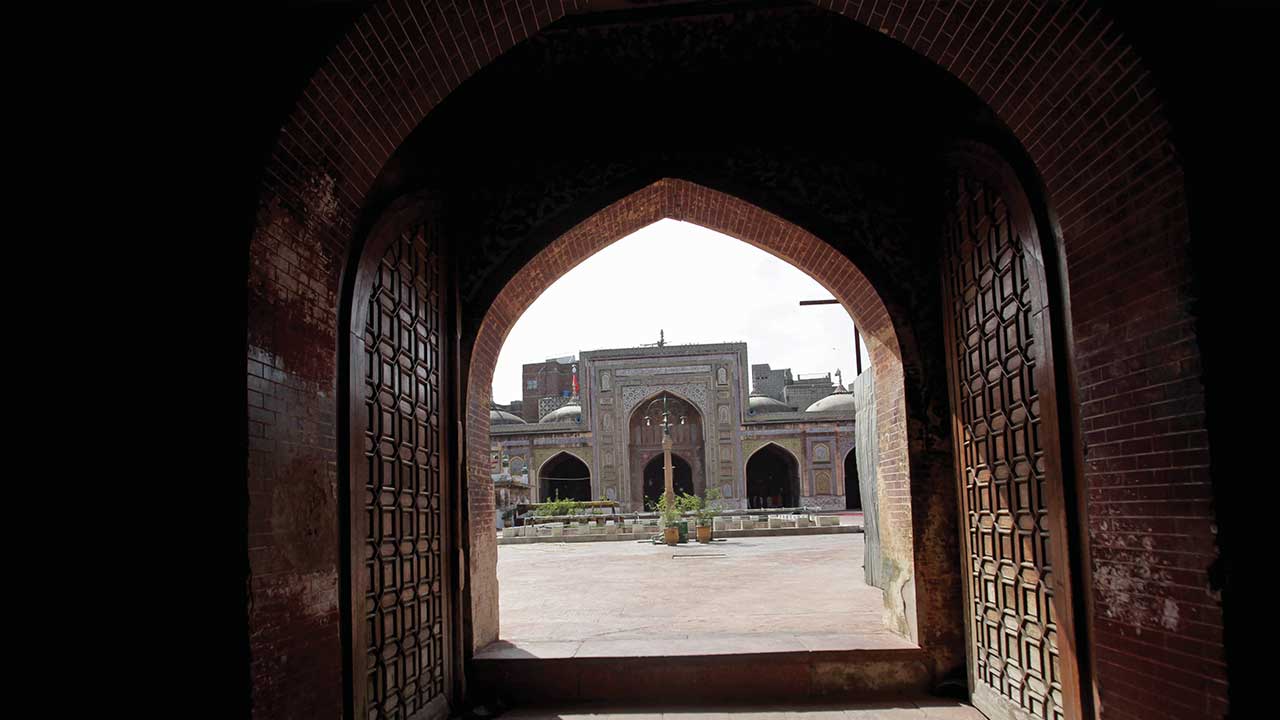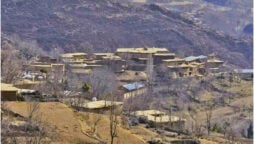
Lahore is a city with many historical buildings. The iconic Masjid Wazir Khan is one of the many historical monuments which is famous for its peculiar architectural edifice. Looking at the mosque gives one the impression that it was built with suave and diligence.
The mosque is a shining example of Mughal-era architecture. The architectural masterpiece attracts the attention of visitors. While entering from the famous Delhi Gate and taking a few steps further comes the Chowk (roundabout) Wazir Khan where the beautiful mosque is located. The marvel was constructed in the 17th century during the reign of Mughal emperor Shah Jahan who was very much fond of building iconic architectural structures.
The mosque is a testament to the skill of artisans in carving, and still retains its beauty even after nearly 400 years of construction. Due to the beauty and grace of the mosque, it is often referred to as ‘A mole on the cheek of Lahore’. Its construction was started in 1634 and the magnificent mosque was completed in a time span of seven years in 1641. The mosque is attributed to Ilam-ud-din Ansari who was also known as Nawab Wazir Khan.
Ansari was an acclaimed physician of his time from the city of Chiniot, District Jhang. He was hired by the Mughal court to serve as a personal physician for Shah Jahan. Due to his wisdom and abilities, Shah Jahan had awarded him with the title of Wazir Khan and later appointed him as the governor of Lahore. The mosque was founded and built under the supervision of Nawab Wazir Khan, and this was the reason that the mosque was named Masjid Wazir Khan.
Structure
The foundation of the mosque was laid on a high platform. The total area of the mosque is 44,361 square metres. The height of each of all the four beautifully crafted minarets of the Wazir Khan Mosque is 100 feet. It is popular for its unique ornamentation blended with various architectural styles of different regions.
The exterior of the mosque is varnished with famous Persian-style tile decoration known as ‘kashi kari’. The design of the inner courtyard reflects and displays Persian architectural techniques. The particular colours such as purple, white, green, yellow and orange signify the Persian artistic architectural style.

The front posture of the entry portal facing Wazir Khan Chowk has Quranic verses inscribed on it besides the sayings of Holy Prophet Hazrat Muhammad (PBUH) in calligraphic style of writing. The verses of Surah Baqarah are written above the aiwan that leads to the main prayer hall by the prominent calligraphist Haji Yousaf Kashmiri. There is a pool in the courtyard which is used to perform ablution.
The tomb of 14th century Sufi saint Syed Muhammad Ishaq Gazurni who is also known as Miran Badshah is also present in the courtyard of Masjid Wazir Khan.
The roofs are decorated with Persian dominated emblems such as star-shaped flowers and grapevines. The mosque is also decorated with the cypress tree design blended with a variety of colours.
The interior walls of the mosque are decorated and plastered with paintings done rapidly in watercolour on wet plaster on a wall or ceiling, so that the colours could penetrate the plaster and imprints permanently.
The historical mosque is among the list of protected heritage monuments of the Department of Archaeology, Punjab. The marvel was included in the tentative list of UNESCO for World Heritage site status. Since 2009, the mosque is going through a systematic restoration process by the Aga Khan Trust with the collaboration of the Punjab government. It is working on restoring the different sections of the monument.

In 2015, the government of Punjab along with Aga Khan Trust restored a section of Shah Guzargah into its natural form between the mosque and the Delhi Gate with help and contribution from the United States, Germany and Norway governments. The edifice of Masjid Wazir Khan lays under the jurisdiction of the Department of Auqaf, Punjab.
Speaking to Bol News, Deputy Director Auqaf Dr Ghaffar said the monument is protected under the Special Premises Ordinance 1985, besides the Antiquity Act 1975.
The law is lenient to some extent as it allows the use of some modern material to restore some sections of the monument which are highly damaged, he informed.
photos: Mohsin Raza/Bol News
Catch all the Breaking News Event and Latest News Updates on The BOL News
Download The BOL News App to get the Daily News Update & Live News.












 Read the complete story text.
Read the complete story text. Listen to audio of the story.
Listen to audio of the story.